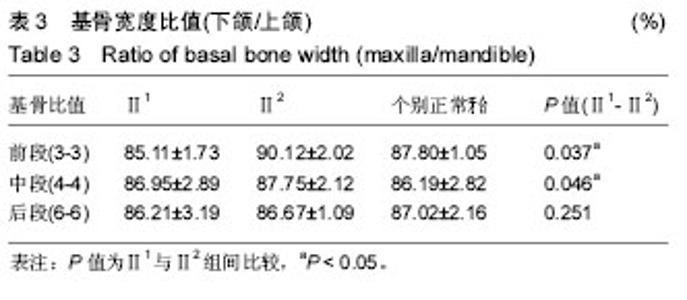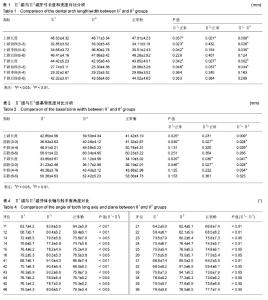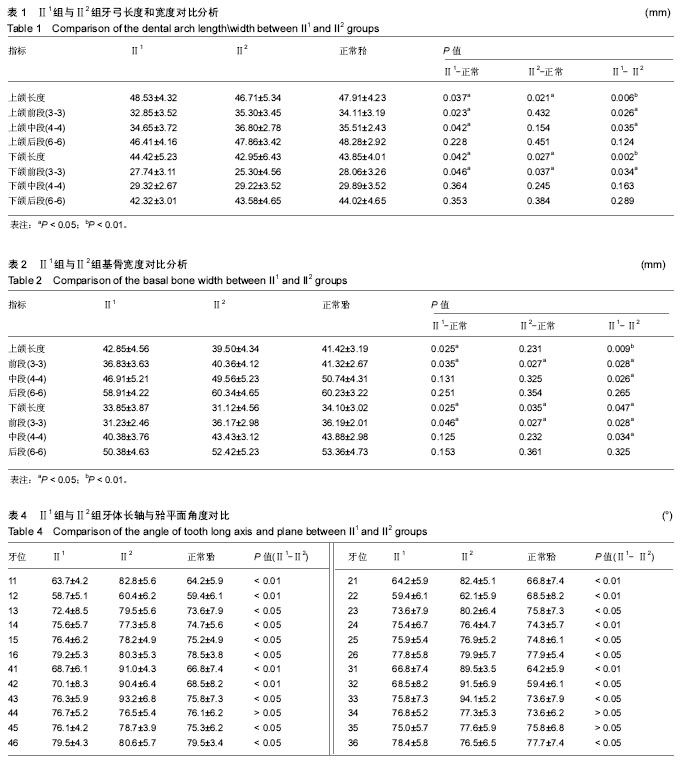| [1] van Noort R.The future of dental devices is digital.Dental Materials. 2012;28(1):3-12.[2] Alcan T, Ceylanoglu C, Baysal B. The Relationship between Digital Model Accuracy and Time-Dependent Deformation of Alginate Impressions. Angle Orthodontist. 2009;79(1):30-36.[3] Persson AS,Oden A, Andersson M,et al. Digitization of simulated clinical dental impressions:Virtual three-dimensional analysis of exactness. Dental Mater. 2009;25(7):929-936. [4] Ender A,Mehl A.Full arch scans:conventional versus digital impressions--an in-vitro study. Int J Comput Dent.2011;14(1):11-21.[5] 吴佳琪,江久汇,许天民,等.骨性II类错牙合下颌牙弓与基骨形态相关性的三维测量研究[J]. 华西口腔医学杂志, 2013, 31(6): 605-609.[6] Sousa MV, Vasconcelos EC, Janson G,et al.Accuracy and reproducibility of 3-dimensional digital model measurements. Am J Orthod Dentofacial Orthop. 2012;142(2):269-273.[7] Goonewardene RW, Goonewardene MS, Razza JM,et al. Accuracy and validity of space analysis and irregularity index measurements using digital models. Aust Orthod J 2008;24(2):83-90.[8] Quimby ML, Vig KW, Rashid RG,et al. The accuracy and reliability of measurements made on computer-based digital models. Angle Orthod.2004;74(3):298-303.[9] Tetradis S, Anstey P, Graff-Radford S. Cone beam computed tomography in the diagnosis of dental disease. Tex Dent J. 2011;128(7):620-628.[10] Grauer D, Cevidanes LS, Proffit WR. Working with DICOM craniofacial images. Am J Orthod Dentofacial Orthop. 2009; 136(3):460-470.[11] Lightheart KG,English JD,Kau CH,et al.Surface analysis of study models generated from OrthoCAD and cone-beam computed tomography imaging. Am J Orthod Dentofacial Orthop. 2012;141(6):686-693.[12] Martorelli M, Ausiello P, Morrone R.A new method to assess the accuracy of a Cone Beam Computed Tomography scanner by using a non-contact reverse engineering technique. J Dent. 2014 ;42(4):460-465.[13] Kihara T, Tanimoto K, Michida M,et al. Construction of orthodontic setup models on a computer. Am J Orthod Dentofacial Orthop.2012;141(6):806-813.[14] El-Zanaty HM, El-Beialy AR, Abou El-Ezz AM,et al. Three-dimensional dental measurements: An alternative to plaster models. Am J Orthod Dentofacial Orthop. 2010; 137(2):259-265.[15] 万贤凤,张治勇,王辉玲,等.CBCT与激光扫描联合的数字化三维牙颌模型重建[J]. 贵阳医学院学报,2013, 38(4): 408-409.[16] 王芳.安氏Ⅱ类错牙合切牙区牙颌代偿及牙槽骨形态的研究[J].临床口腔医学杂志,2015,31(2):101-104.[17] Walkow TM,Peck S.Dental arch width in class Ⅱdivision 2 deepbite malocclusion. Am J Orthod Dentofacial Orthop. 2002;122(6):608-613.[18] Pancherz D,Katja Z,Britta H.Cephalometric characteristics of ClassⅡdevision 1 and ClasⅡdivision 2 malocclusion: A comparative study in children. Angle Orthod. 1997;67(2): 111-120.[19] Halimi A, Azeroual MF, Abouqal R,et al.[A comparative study of the transverse dimensions of the dental arches between Class I dental occlusion and Class Ⅱ1 and Class Ⅱ2 malocclusions] Odontostomatol Trop.2011;34(136):47-52.[20] Kapoor D, Garg D, Mahajan N,et al. Class Ⅱ Division 1 in New Dimension: Role of Posterior Transverse Interarch Discrepancy in Class Ⅱ Division 1 Malocclusion During the Mixed Dentition Period.J Clin Diagn Res. 2015;9(7):Zc72-75.[21] Veli I, Yuksel B, Uysal T.Longitudinal evaluation of dental arch asymmetry in Class II subdivision malocclusion with 3-dimensional digital models.Am J Orthod Dentofacial Orthop. 2014;145(6):763-770. [22] Mah M, Tan WC, Ong SH,et al.Three-dimensional analysis of the change in the curvature of the smiling line following orthodontic treatment in incisor class II division 1 malocclusion. Eur J Orthod. 2014;36(6):657-664. [23] Krisjane Z, Urtane I, Krumina G,et al.Condylar and mandibular morphological criteria in the 2D and 3D MSCT imaging for patients with Class II division 1 subdivision malocclusion. Stomatologija. 2007;9(3):67-71.[24] Hajeer MY.Assessment of dental arches in patients with Class II division 1 and division 2 malocclusions using 3D digital models in a Syrian sample.Eur J Paediatr Dent. 2014;15(2): 151-157. |



